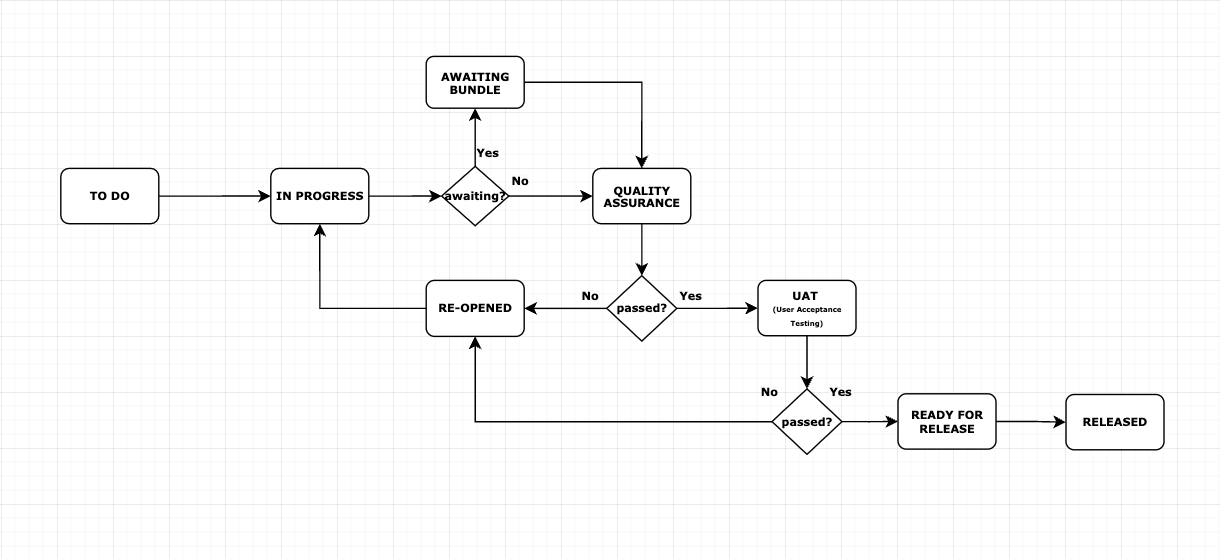Simplifying Ticket Flow for Efficient Project Development
Introduction
Effective project management begins with a structured ticket flow. This process helps keep development on track, reduces bottlenecks, and ensures your team delivers high-quality products on time.
In this post, we’ll walk you through each stage of the ticket flow and explain how to leverage it to optimize your development workflow.
Stages of Ticket Flow
1. TO DO: The Launchpad for Every Task
The TO DO stage is where everything starts. It’s the blueprint of your project, where you plan and prioritize tasks before diving into development. Without this crucial step, it would be easy to lose focus and miss key deliverables.
2. RE-OPENED: Revisiting Tasks for Perfection
Even the best-laid plans sometimes need revision. A task might be RE-OPENED when unforeseen issues arise, such as bugs, new feature requests, or client feedback. This phase ensures that all aspects of the task meet expectations before moving forward.
3. IN PROGRESS: Bringing Ideas to Life
Once a task is picked up, it enters the IN PROGRESS stage. Here, development teams breathe life into the plan. It’s where the magic happens—coding, designing, and building the features that will shape the product.
4. AWAITING BUNDLE: Waiting for Final Components
After the development phase, tasks are often grouped into bundles. The AWAITING BUNDLE stage ensures that all necessary components are in place before moving to QA. It’s not about preparing for a product launch yet, but rather ensuring everything is coordinated and ready for testing once the final pieces of the bundle are complete.
5. QUALITY ASSURANCE: The Gatekeeper of Quality
No product release is complete without thorough testing. The QUALITY ASSURANCE phase is where features undergo rigorous testing to verify that they meet the specified requirements and perform as expected. It's crucial for identifying bugs or inconsistencies before going live.
6. UAT (User Acceptance Testing): Client Feedback Drives Refinement
User Acceptance Testing (UAT) is where the real-world testing begins. Your end users or clients test the feature to ensure it aligns with their needs. The feedback gathered during this phase is invaluable in making final adjustments that will impact user satisfaction.
7. READY FOR RELEASE: The Final Countdown
The READY FOR RELEASE stage means the task has passed all testing phases, adjustments have been made, and everything is now polished. At this point, it’s essentially "game time"—the feature is prepped for deployment and will soon be available to users.
8. RELEASED: Making an Impact
Once the feature is successfully deployed to production, it’s marked as RELEASED. This is the ultimate goal—your hard work is now live and accessible to end users. Celebrate, but also keep an eye out for user feedback to continue improving the product.
Conclusion
Mastering ticket flow isn’t just about moving tasks from one stage to the next. It’s about creating a system that enhances efficiency, fosters collaboration, and ensures transparency. With a solid ticket flow, your team will be better equipped to deliver high-quality software on time, while keeping everyone aligned with project goals.
